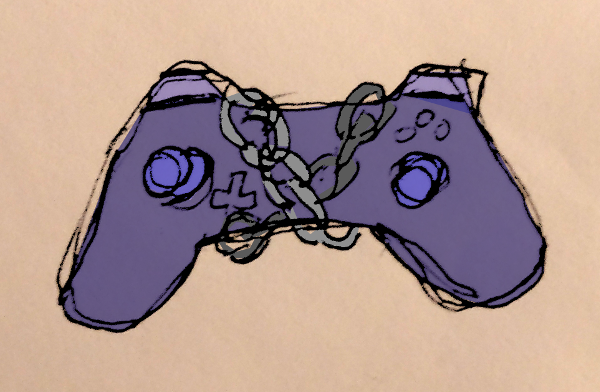It can be intimidating and a little risky to share your screen with a wide audience. Whether for a work demonstration or some streaming fun there is some basic hygiene which can help avoid disclosing personal info or even what apps you rely on.
Here are some ideas to keep your computer ready for screen share at any moment.
Auto-hide Task/menu Bars And Docks
Screens are getting wider and sometimes even a little shorter than in years past; so consider automatically hiding or moving widgets such as the taskbar or dock, menu-bar (most common on Mac), or sidebar. This leaves more room for what you’re trying to show and more space to work. You can usually push the pointer to the edge or press a key to get them when necessary.
- Windows 10:
right-click the taskbar
-> “Taskbar settings”
-> “Automatically hide the taskbar in desktop mode” - MacOS:
“System Preferences”
-> “Dock & Menu Bar”
-> “Automatically hide and show the Dock”,
“Automatically hide and show the menu bar”
Solid Color Background
Unless you really need or want to share your background then consider keeping it a solid color. Black might even help save bandwidth or battery life depending on what you’re sharing or the kind of display. There’s also no risk of NSFW photos appearing from within your albums.
- Windows 10:
right-click the desktop
-> “Personalize”
-> “Background”
-> click drop down
-> “Solid Color” - MacOS:
“System Preferences”
-> “Desktop & Screen Saver”
-> “Apple”
->”Colors”
Practice Using Do-not-disturb
Windows 10 has “Focus Assist” and MacOS calls it “Do Not Disturb”, though whatever the name, practice turning on and off these features. They can help avoid revealing private messages or reminders during a screen share or stream. You may even be able to automatically enable them or set them to turn off after a set period of time.
- Windows 10:
right-click the speech bubble in taskbar
-> “Focus assist”
-> “Priority only” or “Alarms only” - MacOS:
click sliders icon in menu bar
-> “Do Not Disturb”
Separate, Smaller Monitor
Sharing or streaming from a separate screen allows you to manage other tasks or private data without sharing everything. This is especially useful for presenters or recorders who may also be taking notes, checking things off, or handling private questions while sharing. In my experience using a smaller screen helps since some viewers may have small screens which make it harder to read scaled down text from a larger, shared view.
If you must work from one screen consider exploring virtual ‘cameras’ or virtual screens which can take a slice of your larger/wider monitor, without sharing it all. Sometimes an entire virtual machine, or VM, can help since its window can be shared and its settings configured for sharing differently from your host computer.
Specialized Profile
Consider a special share/streaming user account on your computer which only includes the apps, contacts, and files you know are safe to share or stream. This can help if special screen resolutions or settings are needed yet different than your usual working profile.
Spare Headset And Mic Check
Headsets work best since they reduce the need for your computer to cancel any noise or echo from other folks talking along with you. Consider also keeping an extra headset within reach in case of technical difficulties, such as battery exhaustion or software glitches. And do a microphone check periodically to ensure you can be heard without problems.
